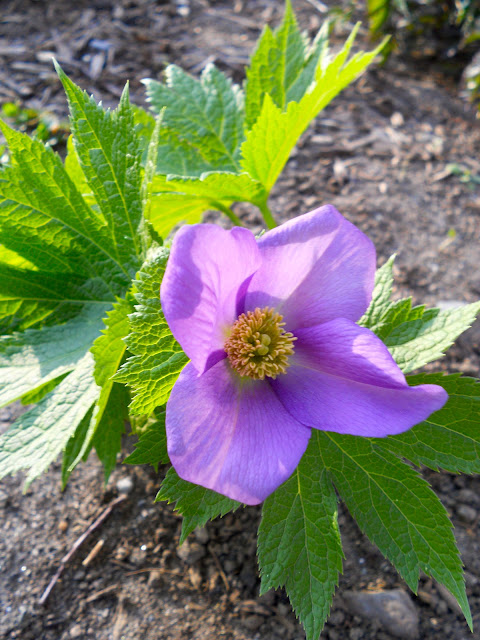I have been very sparse in my blog posting and I do miss the routine of sitting down, looking through pictures, writing and looking up plants, but life has been very busy this spring. I am starting to see the light at the end of the tunnel; soon all the plants will be in the ground, the gardens will be top dressed, the edges refined and all big projects finished or put on hold until fall. And summer will be here. Here are a few nice shots of Gordon and Mary's garden looking beautiful this late May.
Above Lamprocapnos spectabalis (once known as Dicentra spectabilis) 'Gold Heart.' This plant can wash out and look a little busy in some places, against a white house or planted with other chartreuse foliage, but here it looks amazing among a sea of Geranium macrorrhizum and against the faded gray of the gardening shed.
Looking down into the Orchard garden and entrance to the Brick walk.
The woodland garden is as good as I have ever seen it- completely awash in a mixture of phlox stolinifera and phlox divericata.
Looking from inside the woodland garden and out to the fruit orchard and surrounding hay field. I love the jagged edge of the old wall against the bright green patch of mowed grass.
Looking down the lovely Long Borders
Peony 'Roselette,' an early, fragrant, large, single flowered, and tall peony that hardly ever needs staking. This one is a winner!
This garden used to be called the spring garden, but had a complete makeover this year. The path and bench are new as well as all the plants. I was given the task of planting annuals in amongst the new perennials, a la Dixter style. I will keep you posted on how it all turns out...
This has been a glorious year everywhere for the Doublefile Viburnum (V. plicatum var. tomentosum). It is one plant that didn't mind this past winter.



















